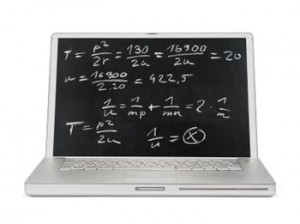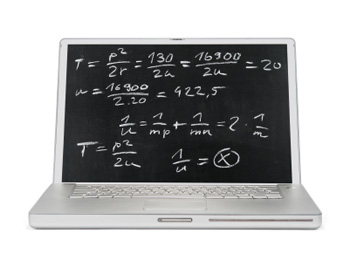
Faculty Member, Mathematics at American Public University
Recently, I toured the 101 Inventions that Changed the World exhibit at the Space and Rocket Center in Huntsville, Ala. It reminded me of how important math is to my life.
The first invention that piqued my interest was the personal computer. Conceived to help the “normal person” crunch numbers quickly, I cannot imagine my life without it. The number of mathematical calculations saved over the years is enormous and we owe it to the mathematicians and engineers who took time to develop the miniaturized devices (another invention–the integrated circuit) behind it.
When I began my career as a planner with the telephone company, my teammates were adding blocks of numbers that represented subscriber lines on each section of cable. I had to aggregate the current, , three-year , five-year and 10-year load on each block. Considering that some of our central offices monitored thousands of cables, a single planner could only plan the facility jobs for two central offices a year. The cycle of planning took several years for an area the size of Huntsville, even with four planners.
When I introduced the personal computer to the planning process, it was considered revolutionary. By mechanizing the process I could individually complete the number of plans that used to require four people. Needless to say, knowing how to program the mathematics of this process on the personal computer was instrumental to my successful career at the telephone company.
Other inventions that significantly impacted my life were optical fiber and the telephone. When I graduated from the University of Alabama in Huntsville, I was hired by a defense contractor. I was tasked with finding an adhesive for the Fiber Optic Guided Missile (FOG-M) system. I had to analyze the properties of different adhesives in order to select one that would allow the fiber to pay out without breaking while still maintaining the integrity of the spooled fiber. It was this experience with fiber optics that qualified me to work for the telecommunications company where I spent 20 years helping to deploy fiber throughout the southeast.
Fiber deployment enabled the spread of the World Wide Web, which British scientist Tim Berners-Lee developed by using another invention–the Internet – as a way to share research information with other scientists around the world. American Public University and its students are each beneficiaries of these inventions and of the efforts of engineers and mathematicians (including me) who helped to plan and construct the “feeder” sections to the information superhighway.
This collection of the 101 Inventions that Changed the World and the collection from Rocket City (Huntsville, Ala.) made me realize that without the power of one of the early inventions in this exhibit–Arabic numerals–none of this would be possible. Sometimes considered to be the most important advance in the history of science and math, Leonardo Pisano (Fibonacci) wrote a book demonstrating how those 10 digits (the Arabic numerals 0,1,2,3,4,5,6,7,8,9), a decimal point, and a symbol for zero could make arithmetic calculations much simpler and easier. These 10 digits comprise what some scholars believe is as close to a universal human language as we can get. It opened the door to many great discoveries that are included in this exhibit.
From the inventions of the electrical generator to the electric guitar in this exhibit, mathematicians and engineers have played critical roles in the invention and development of many devices and concepts that enhance our lives. For me, being a part of the engine that keeps this cycle going is what drives me to impart my knowledge on to the mathematicians and engineers of tomorrow. Knowing that I may be a factor in the life of someone who is responsible for one of the next greatest inventions that changed the world makes being a math instructor most rewarding and worthwhile.
References
www.grandeexhibitions.com, 101 Inventions at the U.S. Space & Rocket Centre, Huntsville, Alabama ,an engaging, educational and interactive multimedia exhibition.
Grimaldi, Ralph, 2011. Fibonacci and Catalan Numbers: An Introduction, John Wiley and Sons, 2012. http://site.ebrary.com/lib/apus/Doc?id=10630585 z. An electronic book accessible through the World Wide Web.
About the Author
Shirley L. Vigil, Ph.D., obtained her degrees in Industrial and Systems Engineering and Electrical Engineering from the University of Alabama in Huntsville and at Birmingham. She worked at the BDM Corporation as a Systems Engineer before she started her career with BellSouth Telecommunications. While at BellSouth, she worked as an Outside Plant Engineer, Planning Engineer, Staff Director, Network Operations General Manager, Senior Director of Process Improvement, and Operations Manager for Bellsouth.net where she was involved in scaling Internet operations for the company. She was employed by American Public University as an Adjunct Professor of math in 2007 and has taught math full time at APU since January of 2011.

Comments are closed.